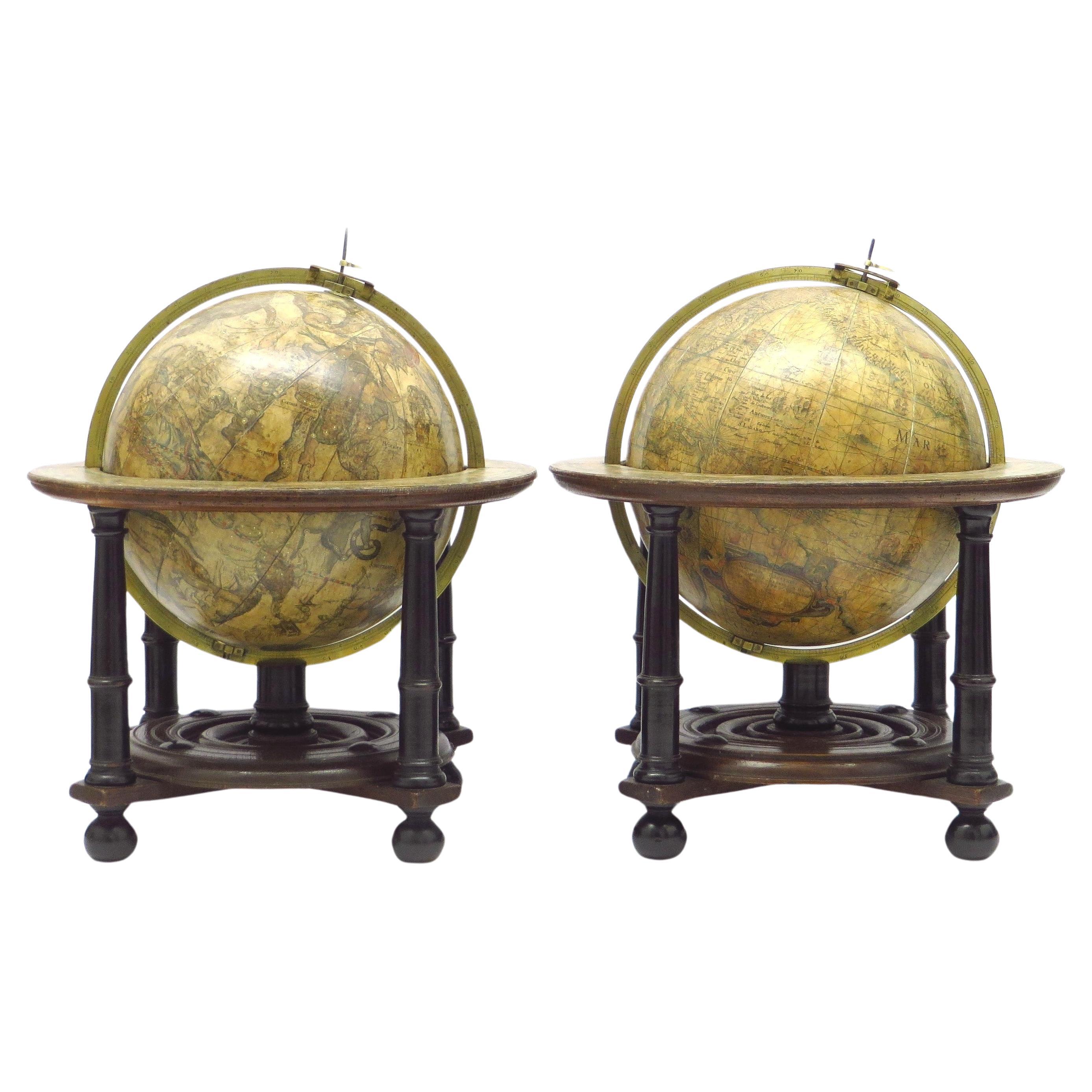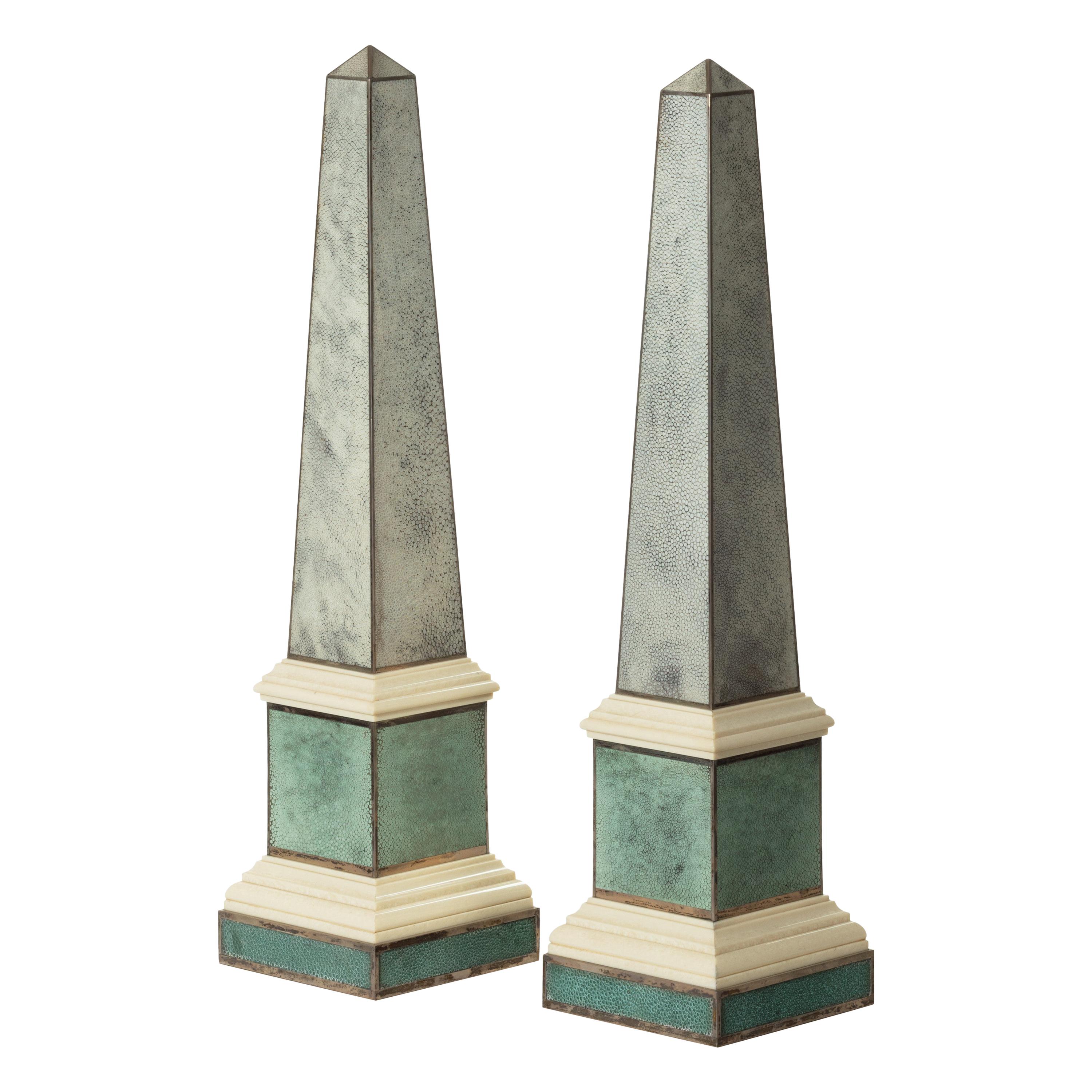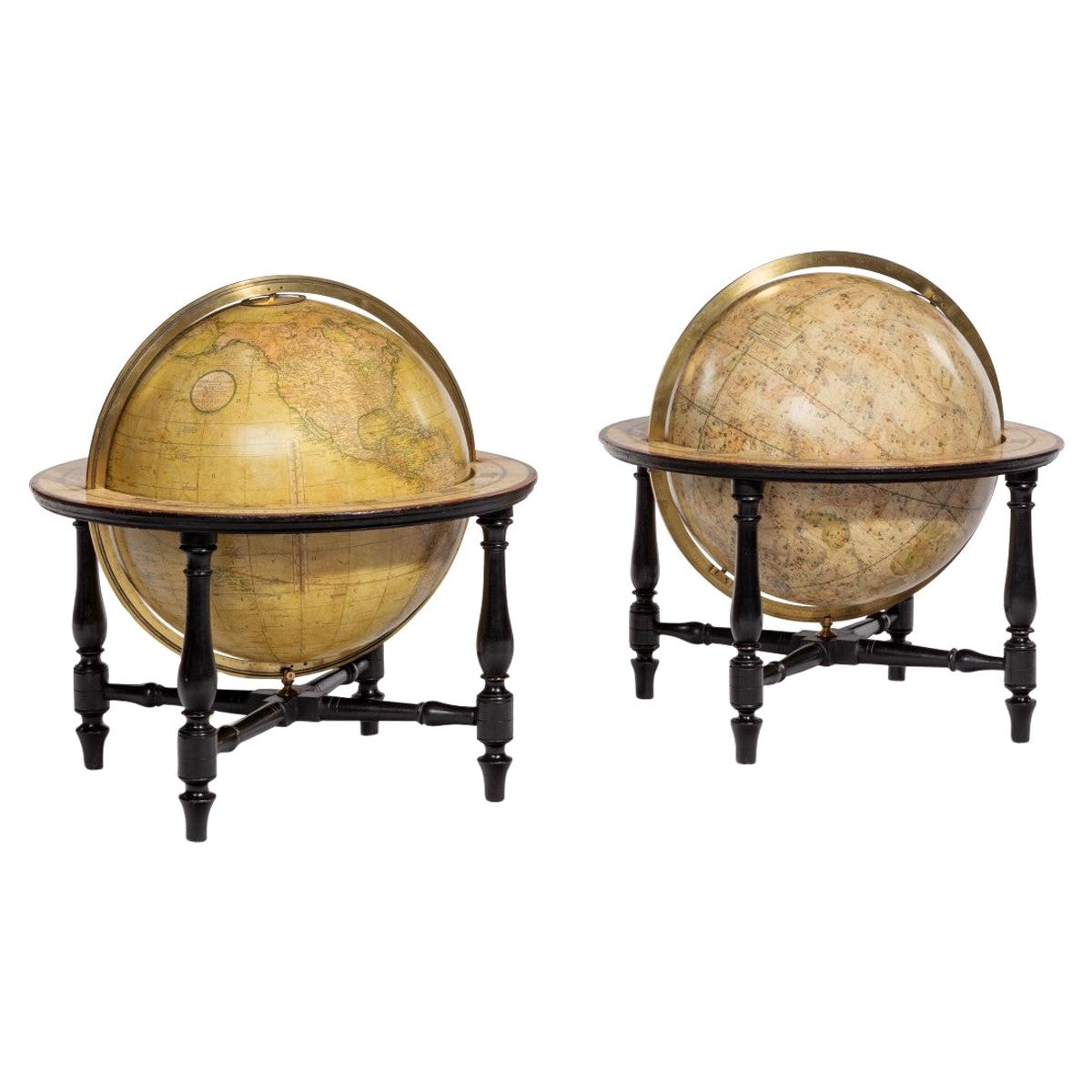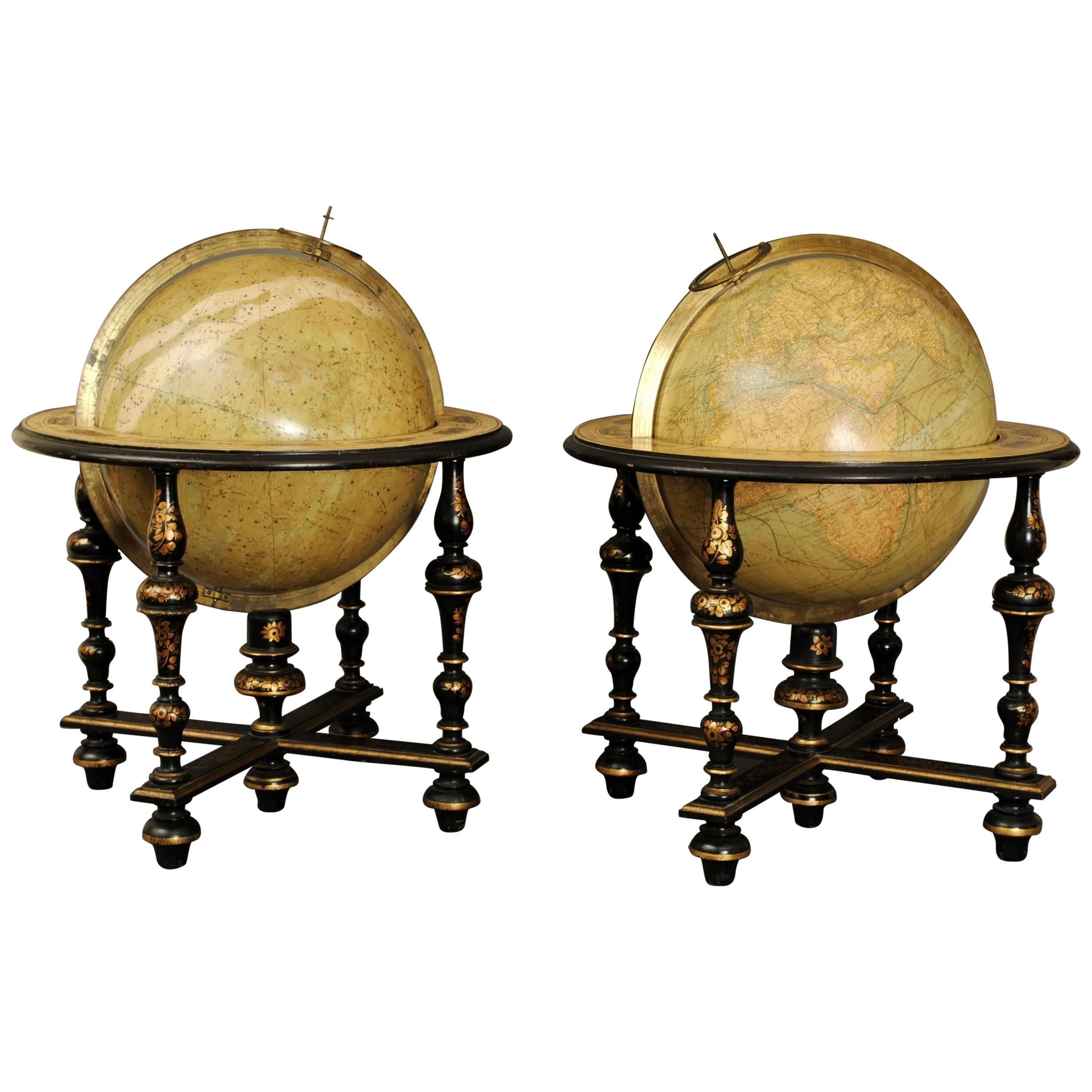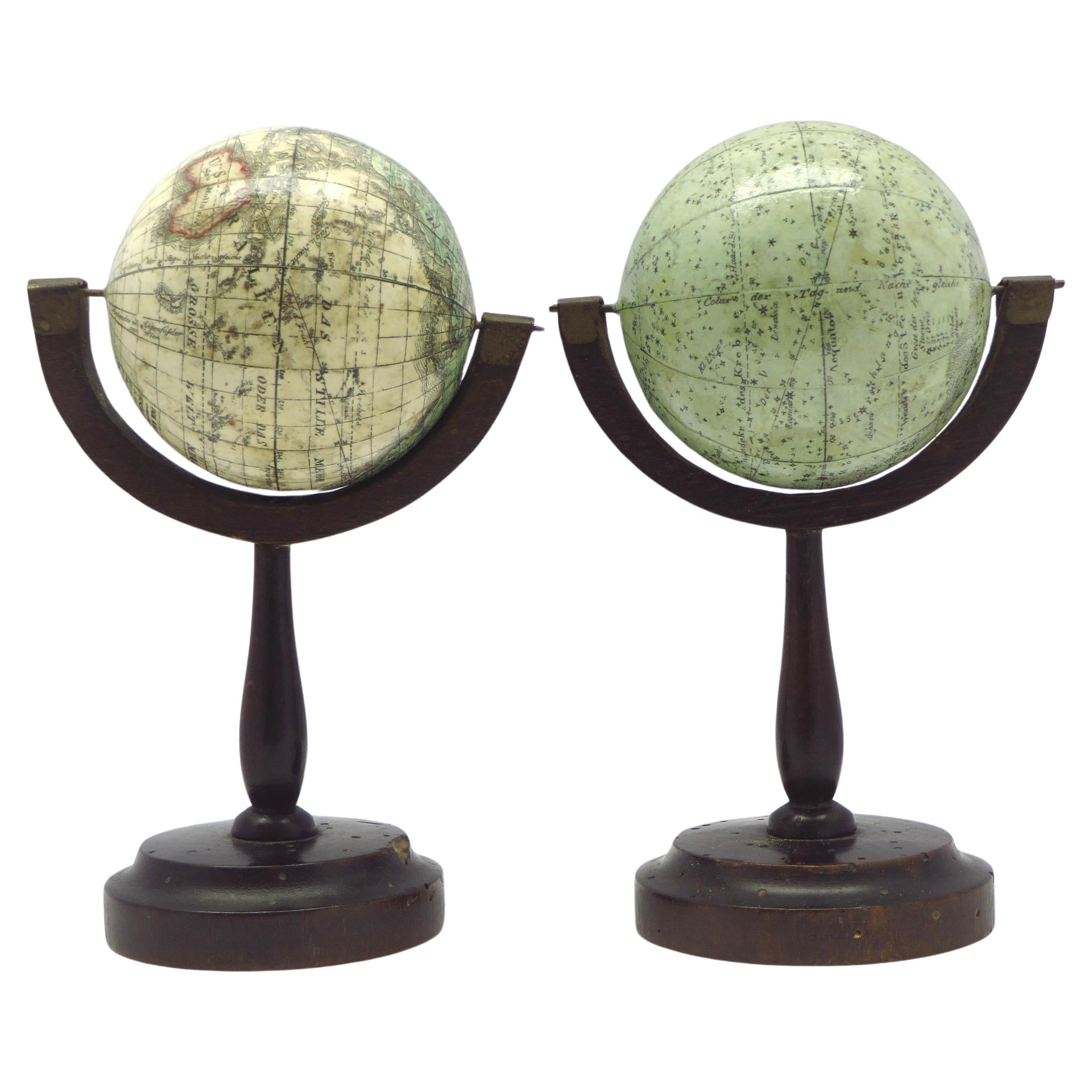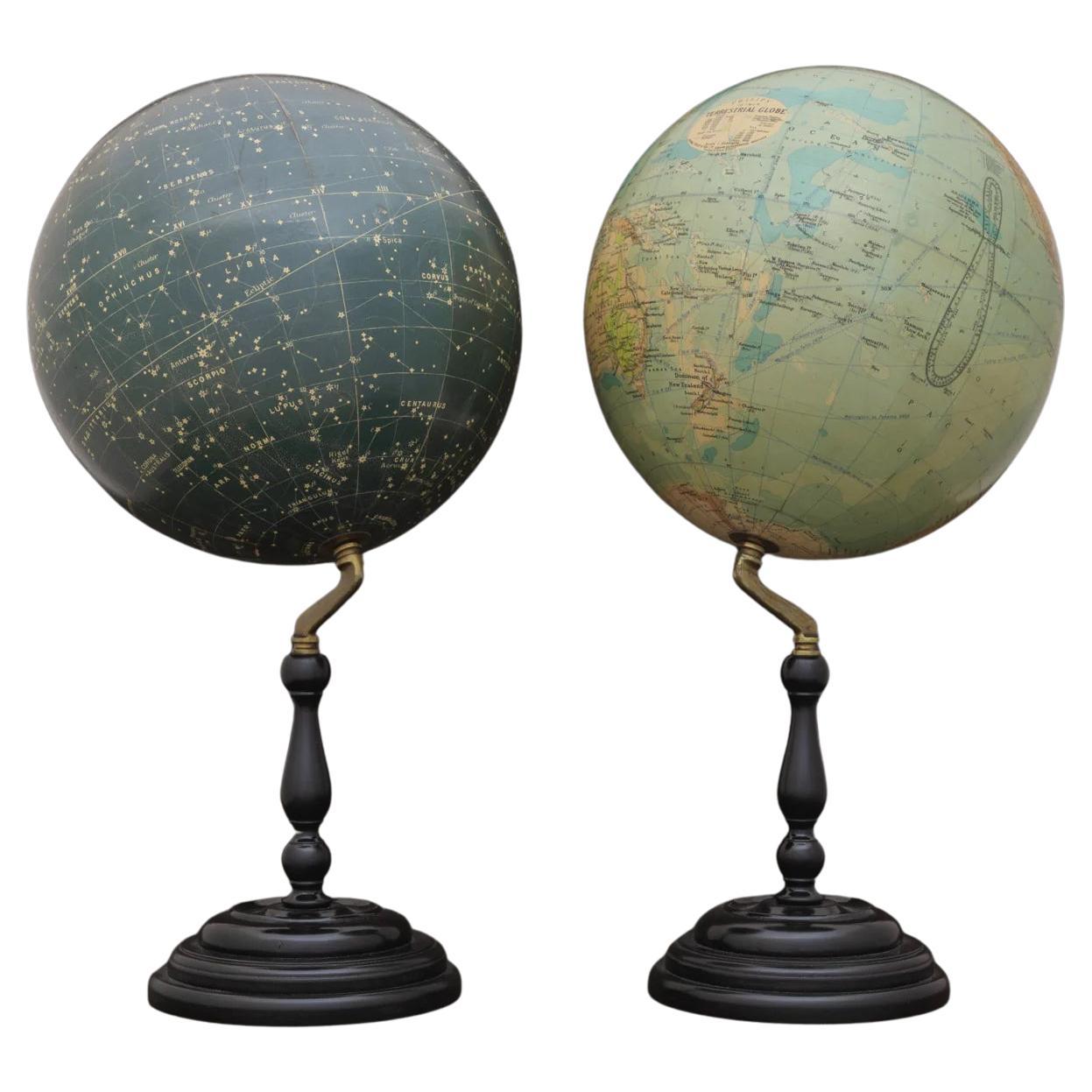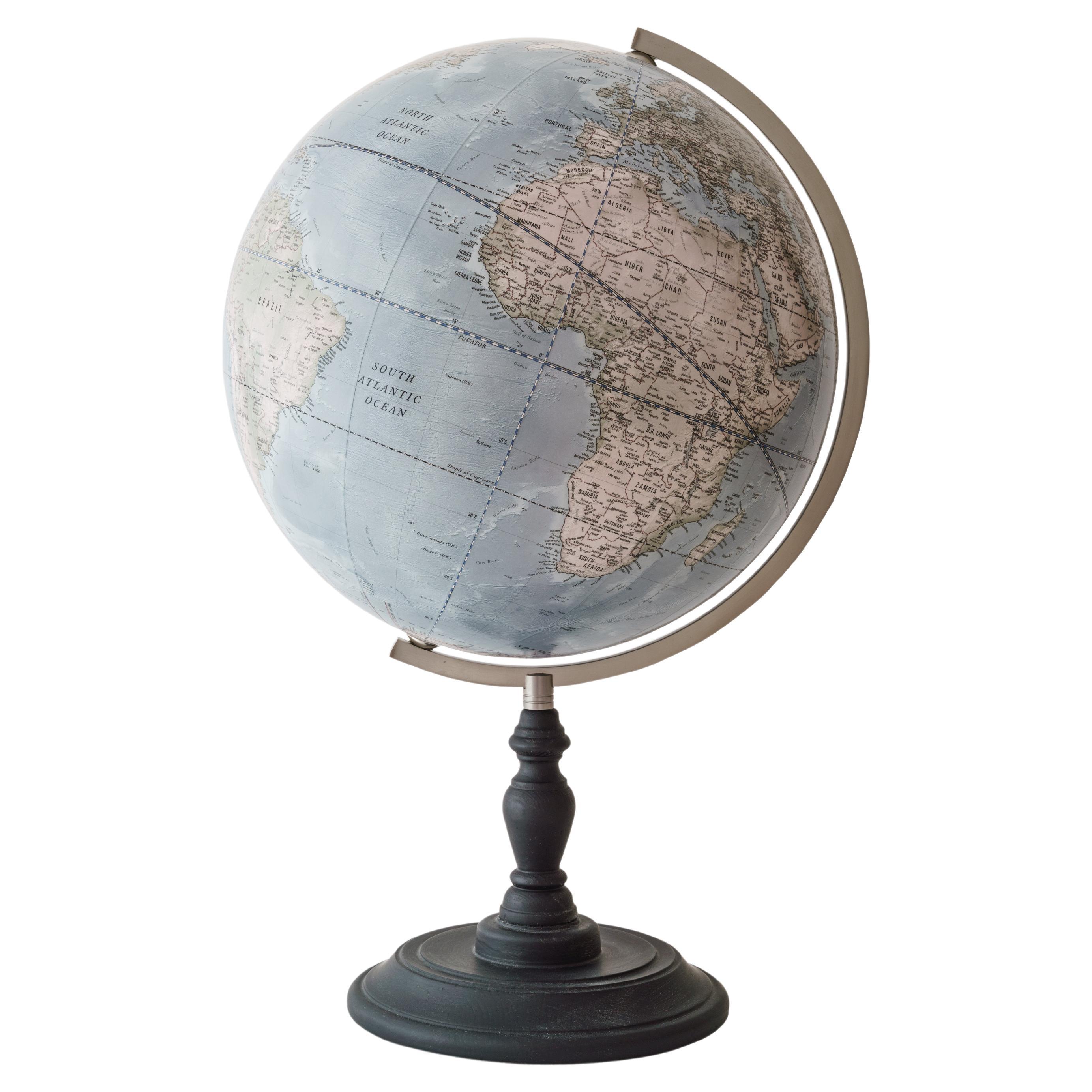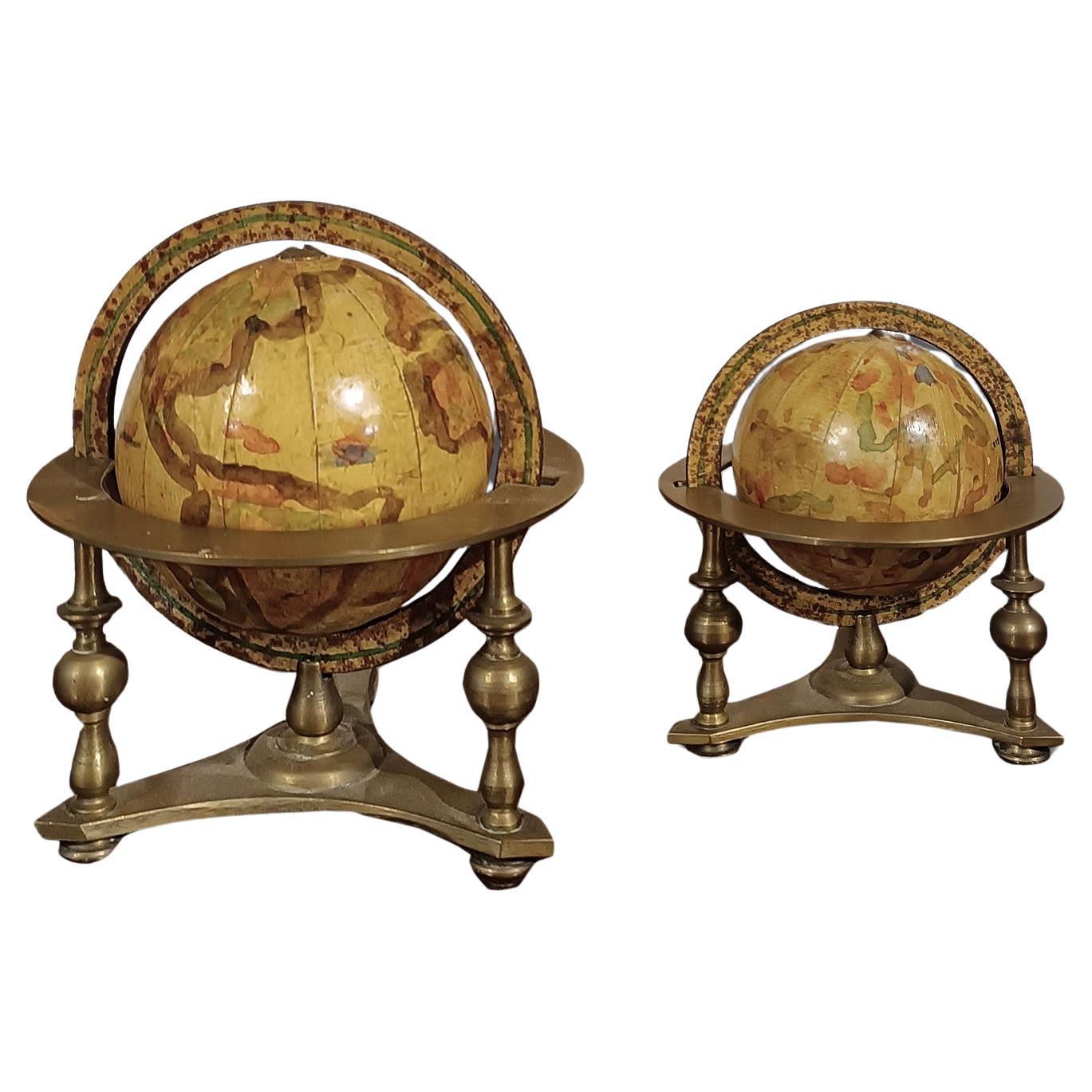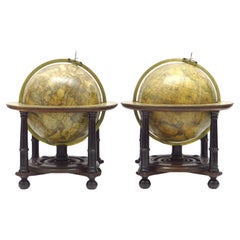
Exceptional Contemporary Pair of Bespoke Shagreen Globes
View Similar Items
1 of 10
Exceptional Contemporary Pair of Bespoke Shagreen Globes
About the Item
- Dimensions:Height: 47.64 in (121 cm)Width: 29.53 in (75 cm)Depth: 29.53 in (75 cm)
- Sold As:Set of 2
- Period:
- Date of Manufacture:2000s
- Condition:
- Seller Location:London, GB
- Reference Number:Seller: M30331stDibs: LU84072831772
You May Also Like
- An exceptional pair of BLAEU table globesBy Willem BlaeuLocated in ZWIJNDRECHT, NLA very rare set of globes, 9 inch / 23cm, with an overall height of 38 cm, Amsterdam, dated 1602, but published after 1621. In their original stands with circular wooden horizon rings, covered with printed paper, supported by four legs and brass meridian rings supported by a single column. The terrestrial and celestial globe are made up of a set of 12 engraved gores, heightened in gold and Arctic ice caps, printed on paper and mounted on a plaster sphere of papier maché. Each sphere is mounted in a graduated brass meridian ring with the production number stamped at the back of the ring. Both globes are mounted on four-legged ebonized oak Dutch stands, which support the horizon ring. The legs are connected by two crossbeams which support a circular base plate with central support for the meridian ring. The horizon rings are covered with printed paper. With usual defects: paper equinoctial tables present gaps that are filled and restored; small splits along gores; several partially deleted entries; on the globe, the date 1602 and the text of the cartouche in America, are illegible ; small scattered spots but in general in good condition for such an early globe pair of which presently only 19 pair are recorded. These 9-inch globes are among the rarest since very few copies of them are known to exist, in comparison with the smaller or larger globes of Blaeu (4, 6, 13.5, and 26 inches). Blaeu's terrestrial globes were highly valued and were much in demand, because of the care with which they had been prepared, because of the efforts to give the latest information on discoveries, and because of the loxodromic lines that made them of special value to navigators. His celestial globes were appreciated for the fact that he had been the pupil of Tycho Brahe, who was himself known to be the greatest astronomer of his time. Willem Janszoon Blaeu (1571–1638), originally trained in astronomy, he quickly became a leading maker of maps, atlases and instruments. Blaeu’s globes were luxury items for wealthy and intellectual merchants and nobility who benefited from Blaeu’s access through the Dutch East India Company to the latest navigational discoveries and geographical information. Willem Jansz Blaeu collected information that Dutch mariners gathered from around world and brought back to Amsterdam. Crews were instructed to record information about the lands they visited and the skies they saw. Blaeu incorporated these observations in maps and globes. Through his web of contacts and thanks to assiduous research, he was also able to obtain the most recent information about the latest discoveries in the western hemisphere and the South Pacific, where Dutch explorers were particularly active at the time. Since the globe was published after 1618, Blaeu was able to include the discoveries made by Henry Hudson in his attempt to find a passage to the East Indies. He also included recent Pacific discoveries of the celebrated voyages of Willem Cornelis Schouten and Jacob Le Maire, who both traversed the South Pacific and the Atlantic. The findings of Schouten and Le Maire in the Tierra del Fuego region are also incorporated. The Strait of Le Maire is drawn and the hypothetical southern continent is labelled “Terra Australis Incognita Magalanica”. Olivier van Noort’s track is drawn and labelled. His route is indicated with a broken line and the words: “Navigationis Olivierij ductus” (several times). There are various decorative features, such as animals on the different continents, many ships on the high seas and allegorical and mythical figures around the cartouches. The nine-inch globe is not just a smaller version of the one published in 1599. Drawings of animals and people do often correspond to those on the earlier globe, but Blaeu made several significant changes. - The west coast of North America is drawn differently and the river system of Brazil is altered. - The hypothetical southern continent is labelled: Terra Australis Incognita Magallanica. - There are nine ocean names in handsome curling letters: Mare Congelatum, Mare Atlanticum, Oceanus Aethiopicus, Mare Arabicum et Indicum, Mare di India, Oceanus Chinensis, Mar del Zur, Mare Pacificum, Mar del Nort. - Willem Blaeu...Category
Antique 17th Century European Dutch Colonial Globes
MaterialsOther
- Pair of Contemporary Grey and Aquamarine Shagreen and ObelisksLocated in Lymington, HampshireA pair of contemporary grey and aquamarine shagreen and obelisks, the square section pedestals with two stepped ivorine plinths, all with silver edging. English, circa 2010.Category
2010s English Obelisks
MaterialsAlabaster
- Pair of Cary’s Table GlobesLocated in Lymington, HampshireA pair of Cary’s 15-inch table globes, each set into an ebony stand with four turned legs and stretchers, the terrestrial stating “Cary’s New Terrestrial Globe exhibiting the tracks ...Category
Antique Early 1800s English Globes
MaterialsEbony
$27,784 - Superb Pair of Delamarche Table GlobesLocated in Lincolnshire, GBA wonderful pair of 19th century table globes by Mansion Delamarche Paris, in superb original condition. The 12" globes in the original lacquered and gilt decorated stands.Category
Antique 1860s French Globes
$37,684 / set - A pair of extremely rare Valk table globesBy Gerard and Leonard ValkLocated in ZWIJNDRECHT, NLTitle on the globes: VALK, Gerard and Leonard. [Terrestrial globe:] Cosmotheore, caelesti nostro globo, par, et plane novus, hic terrestris ut existeret, certo scias, errore veterum ...Category
Antique 18th Century Dutch Dutch Colonial Globes
MaterialsOther
- A fine pair of miniature globes on standsBy Karl MullerLocated in ZWIJNDRECHT, NLA rare pair of miniature terrestrial and celestial globes. by K. Müller, 1822 Karlsruhe, Germany Diameter globes: 7 cm. Total high: 14,5 cm. Each with 12 hand-coloured engraved p...Category
Antique Early 19th Century German International Style Globes
MaterialsHardwood, Paper
